Weedy humans are weak. Weedy plants are tough as nails. Wild flowers we like. Weeds we don’t. I think we need to make our minds up. When does a weed become a wild flower? What weeds are weak? When is a flower no longer wild? I want answers.
I’ve made my mind up that I quite like weeds. They’re annoying when they’re brutes that affect other plants and they can act as pest and disease reservoirs. I am convinced however that there must be some weeds that aren’t ‘that’ bad. I might be wrong, we will find out together!
Down the allotment I’m allowing a few weeds to stay (at least that’s what I tell myself, in reality I have no choice). I’ve decided to encourage a few weeds to grow in a bid to fill the gaps to prevent the less appealing ones.
I’m mainly interested at the moment in the micro weeds. Here are the ones I’m actively not weeding out.
Exhibit no.1: Oxalis corniculata (red leaved variety)
When I first got my allotment I eagerly weeded the entire plot by hand over the course of a couple of months. There was so much red leaved clover that after I’d rid the plot of it I had a horrible feeling it might have been there intentionally as a green manure. I don’t think so now but I’ve grown to not worry about it growing there. This little weed is so tiddly I can’t imagine it can possibly be much trouble for the stronger growing veggies. I think it’s quite pretty and unobtrusive so I’m letting it create a carpet across the plot.
Exhibit no.2: Anagallis arvensis (scarlet pimpernel)
I saw this out and about on the sand dunes in Norfolk, I took a photo hoping to find out what it was because it has the most wonderful dusty orange little flowers fading to terracotta. It forms a low growing mat. To my joy, it was also all over my allotment! Surprise surprise, it’s there because it’s the common scarlet pimpernel weed. Anagallis arvensis seems to be a nice friendly weed that’s easy to control and carpet forming. This badger is staying.
Exhibit no.3: Achillea millefolium
I’m actually primarily interested in Daucus carota the wild carrot, but Achilleas are similar and equally as beautiful – they’re hard to tell apart if you don’t know what to look for (differences in leaves and umbel structure). Above is a picture of Achillea millefolium on Clapham Common.
As I get to know the world of plants better, my interest keeps spreading across the plant kingdom in all sorts of ways. I want to know everything about plants. And I am increasingly interested in plant communities, biology, organic practices and the interplay of ecosystems. There’s a lot to discover.
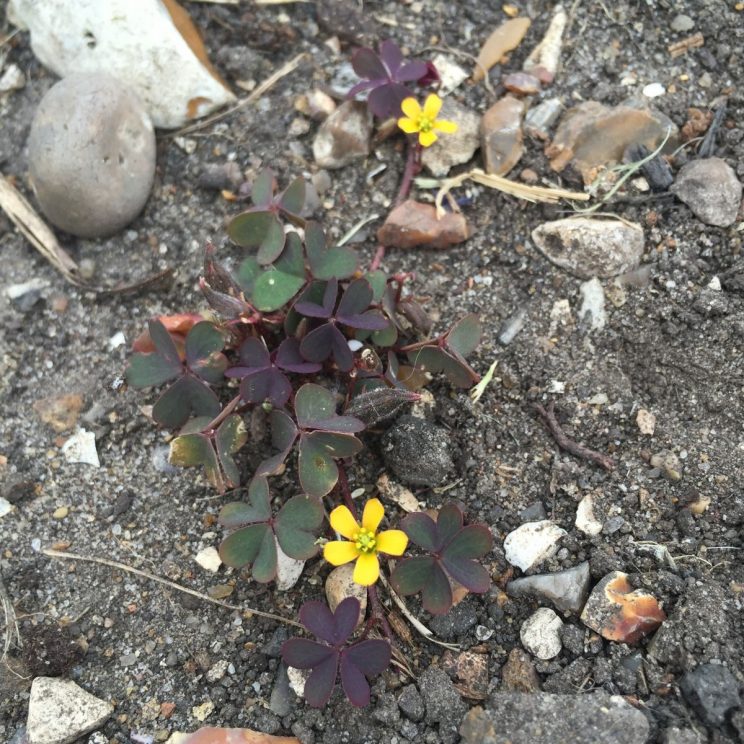
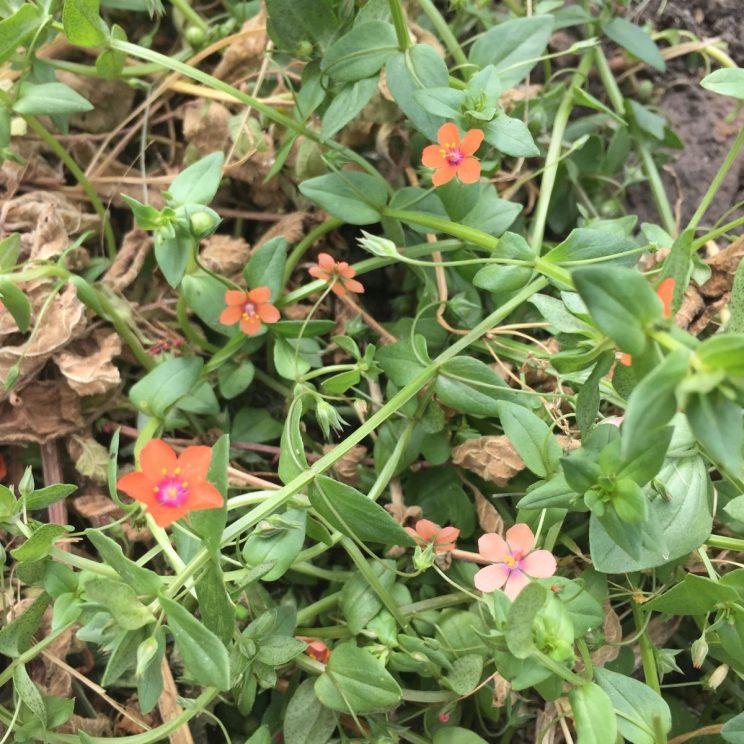
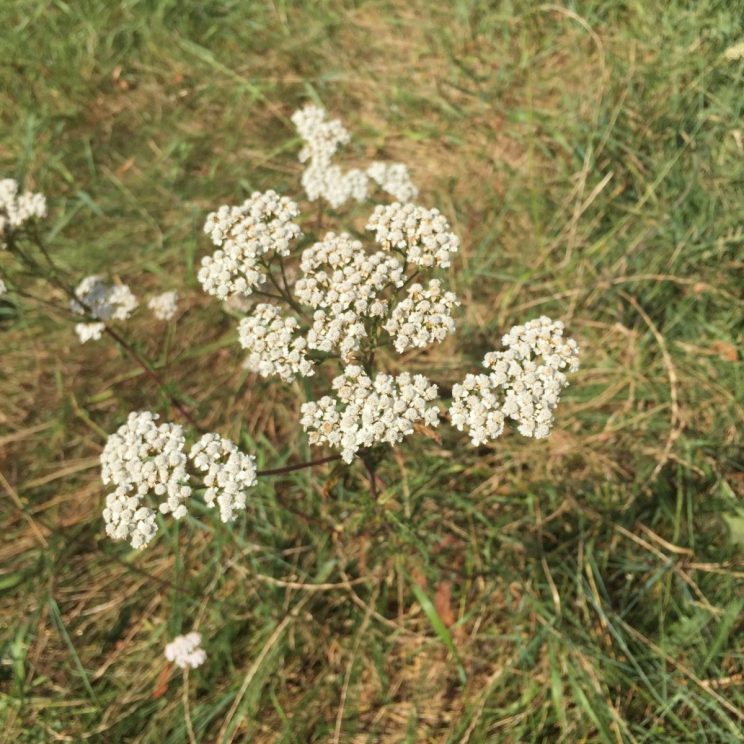
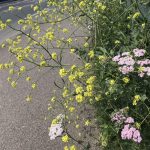
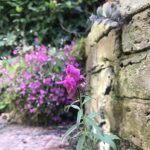
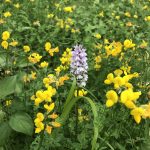
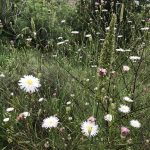
Great post Jack! Like you, I’m a bit of a weed fan! There are several really good books on the subject out there, and if you haven’t already read it, is recommend Richard Maybe’s ‘Weeds, the Story of Outlaw Plants’, which discusses some of the very points you raise.
I also love the red leaves creeping wood sorrel, much to be admired. It can as you’ve noticed form something of an impenetrable mat, and, ok, it might compete with your veg for nutrients and slow water getting to their roots, but you could always pretend it’s a crop in its own right! Lemon tangy leaves and full of Vitamin C!
Thanks Andrew – your book recommendations have never failed me, so I will give that a shot. It was a Richard Mabey book that helped peak my interest in native wild flowers. I shall also try eating some of the leaves!
Interesting post. I also leave tiny Oxalis corniculata in the front as I love its leaf colour – some of my edible Oxalis tuberosa have similar, but larger leaves. Scarlet Pimpernel is also a sweet weed – not too hard to remove and beautiful flowers when you look at them close up. A hand lens has really transformed my view of small, common wild flowers. They are so interesting when studied in detail. 🙂
“The invariable mark of wisdom is to see the miraculous in the common.”
― Ralph Waldo Emerson
Great post
Lovely post! I also try not to weed indiscriminately, and to identify wild plants before I pull them out. A lot of ‘weeds’ are edible, and I may as well combine weeding with harvesting!
Thoughtful post. I like some weeds, such as Anagallis arvensis (I now know the latin name for scarlet pimpernel – thanks!) and the Oxalis. I don’t mind Herb Robert in moderation. A lot of wildflowers I love are considered weeds, such as Foxglove, Cornflowers, Poppies.
I think what ‘weeds’ stay and which go can really depend on your micro-climate too. For instance, in my current garden, Hairy Bittercress and the Willowherbs have to go, as they can really take over if I’m not careful. Yet in my previous garden these weren’t such a problem.
One book I’d like to look at when I have time is John Walker’s new book on Weeds http://earthfriendlygardener.net/books-gardening-environment-writer-author-john-walker-how-create-an-eco-garden/.
I saw a path lined with plantains at The Salutation garden on Saturday- it may be a non- weed variant of it but it certainly looked very handsome